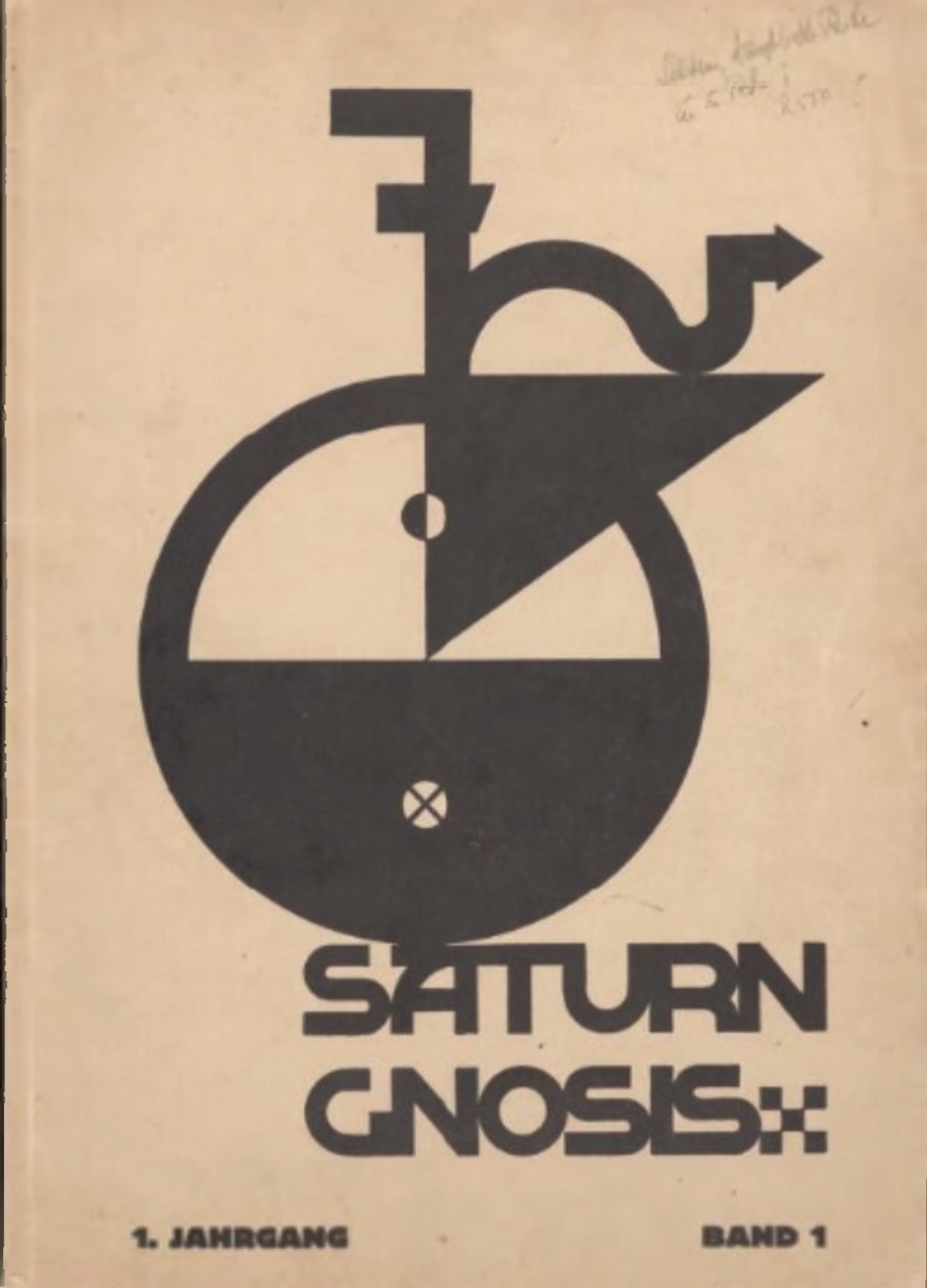

|
| About | Archives | Practices | Contribute | Contacts | Search |
| Periodical: | Saturn Gnosis |

|
|
| Summary: |
From Pat Deveney's database:
Saturn Gnosis. Only five issues were published (volume 1, nos. 1-4, 1928-1929; volume 2, no. 1, 1930), and any possibility of continuing the journal after the last issue was foreclosed by Grosche's financial problems that led to the closing of his bookshop in 1933 and by the subsequent seizure of his library by the Nazis. This, and the Fraternitas Saturni of which it was the official organ, were products of the middle-class degeneracy of the Weimar Berlin world of the late 1920s and figure prominently in Max Gordon's Voluptuous Panic (2006): modern (often trance) painting and music, drugs (peyote, cocaine and hashish), vampirism and blood rituals, promiscuous and outre sex, etc. The journal and the Fraternitas Saturn were the work of Eugen Grosche (1888-1964), a Berlin bookseller, whose excesses mirrored those of the Weimar era generally. Karl Germer (a competitor) called him "a sex maniac, [who] dabbled in hypnosis and drugs – one of the lowest types of occultist I ever met." Grosche had started his occult career in Leipzig as a Theosophist in the complex line of Franz Hartmann, and came to Berlin in 1911 where he started "Inveha" (Internationales Verlagshaus). In 1919 he began publishing and selling occult objects (drugs, pendulums, mirrors, talismans, etc.) as well as beauty potions and horoscopes, and gave occult lectures in the back room of his store. In the early 1920s he was a member (and later secretary) of Heinrich Tranker's and Karl Germer's Pansophische Loge der lichtsuchenden Bruder, on which see the note under Pansophia. The Fraternitas Saturni grew out of the so-called Weida Conference of August 1925 that tried unsuccessfully to bring together Grosche, Tranker, Albin Grau, Germer, Aleister Crowley, and others of the O.T.O. inheritance. This led to the dissolution of Pansophia the next year and the institution of the Fraternitas Saturni, which absorbed some 40 of that order's members, as it later absorbed the members of the Orden mentalischer Bauherren of "Rah-Omir" (Frederich Wilhelm Quinscher, 1893-1945). At the time this journal was published the fraternity had lodges in Berlin, Dresden and Bucharest and boasted of about 200 members, including a surprising number of women and aristocrats and members of the art and theater world. The Fraternitas Saturni (officially, the German Grand Lodge Fraternitas Saturni, Orient of Berlin), was an independent, OTO-related "esoterische Studiengesellachaft." It was wildly eclectic and never sought or claimed strict adherence to the "official" OTO. Grosche primarily took from the Reuss-Crowley tradition only a version of the idea of sex as a magical means, and adopted as the fraternity's motto Crowley's "Do what thou wilt is the Law": "Tue was du willst, ist das Gesetz. Liebe ist das Gesetz, Liebe unter Willen," a sentiment that Grosche called "Merciless Love." The fraternity advertised itself as a "Pansophic Society. It sets itself the task of introducing the Pansophic Sciences (occultism, magic, yoga, mysticism, astrology, etc.) to interested ladies and gentlemen, and to train them in all fields of knowledge of Pansophy in theory and practice and help them as a helper and guide to show the way to the Divine Light." The underlying myth and cosmology of the Fraternitas Saturni were Gnostic, outlining the beneficent role of Satan on the soul's way through Saturn to the sun, but this theoretical foundation was overlaid with vast numbers of lessons on Buddhism, ancient Egypt, the Mithras cult, grimoires, witchcraft, Masonry, astrology, telepathy, thought-power clairvoyance, development of the will as the basis of esoteric development, the symbolism of dreams, New Thought, yoga, suggestion and autosuggestion, numbers, hypnosis, astral magnetism, meditation, breath control, graphology, chirology, amulets, talismans, etc., etc. The fraternity also dabbled later with Orgone Boxes, and with Rah-Omir's "Tepaphon" (a death ray and was claimed to be the most powerful magical weapon ever created. It was basically a light projector that when focused on the target (by shining the light on a photograph of the victim or on some of his belongings) killed him or -- depending on the color of light – magnetically and astrally cured him.) On a practical level the fraternity aimed at the evocation of elemental and planetary spirits and materialization of the entities through menstrual blood and sperm smeared on a parchement adorned with appropriate sigils (at times eaten by the priest). Sexual practice and theory were, however, carefully guarded secrets reserved for the higher degrees, mainly the eighteenth degree (Gradus Pentalphae) that taught the orgiastic copulation of a couple energized by the group energy of members of the lodge (black altar, scarlet room, five-branched candle sticks, priests, masters, sacrifice of a black cock, etc.). The order also tried to activate the chakras of an entranced woman by making magnetic passes (in a form and at a time astrologically determined) over the body of the "Daughter of Lilith" (the female chela sex partner). (It is hard to say how much of this was imagination and how much was actually performed in the group's ritual, but the lurid, Romantic detail of the descriptions gives reason to doubt that the fraternity regularly engaged in its notorious practices.) The journal contained regular translations of Aleister Crowley material and notices of the books of "Meister Therion." Contributions by Fraters Gregorius, Pacitius (Albin Grau, 1884-1971), Johannes, et al., and lodge notices for the Orients of Romania, Dresden and Berlin by "Rah-Omir." The order is said to have revived the journal in the 1960s, and again in 2008. ZDB: Freiburg Inst Grenzgeb Psychol; Munchen UB; Berlin UB Humboldt; Berlin SBB Haus Potsdamer Str; Leipzig DNB; Ritman Library, Amsterdam.
|
| Issues: | Saturn Gnosis V1 N1 July 1928 |
|
|